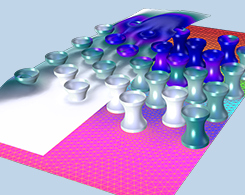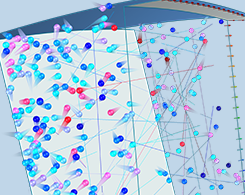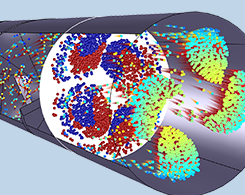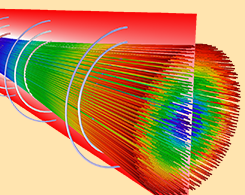Blog Posts Tagged Particle Tracing Module

Modeling a Pencil Beam Scanning Nozzle Used for Proton Therapy
In proton therapy, an energetic beam of protons is used to deliver ionizing radiation to the treatment area. Learn how particle tracing simulation can be used to help advance this treatment.

Modeling an Acoustic Trap: Thermoacoustic Streaming and Particle Tracing
Acoustic traps are used in a range of biomedical applications for manipulating cells and particles. See how an acoustic trap can be simulated in COMSOL Multiphysics® here.

Estimating Pi Using the Monte Carlo Method and Particle Tracing
We take a popular way to estimate the value of pi, the Monte Carlo method, and add particle tracing simulation to the process for a fun way to visualize the results.

How Well Do Mosquito Traps Work? Observing Their Effectiveness with Particle Tracing
Are you a mosquito magnet? For fun, let’s explore whether mosquitoes prefer mosquito traps or human skin with equation-based modeling.

How to Compute Residence Time in Flow Models with COMSOL®
You can compute residence time in flow problems using the Particle Tracing Module. Get the details in this blog post.

How to Analyze Turbomolecular Pumps with COMSOL Multiphysics®
Modeling gas flow in a turbomolecular pump calls for specialized numerical methods, because at such low pressures, the gas molecules rarely collide with each other.

What Formulation Should I Use for Particle Tracing in Fluids?
The COMSOL® software gives you 4 equation formulation options when modeling particle tracing in fluids: Newtonian; Newtonian, first order; Newtonian, ignore inertial terms; and Massless.

Modeling a Pierce Electron Gun in COMSOL Multiphysics®
Cathode ray tubes, electron microscopes, spectrometers, and particle accelerators: These devices and components commonly use Pierce electron guns.
